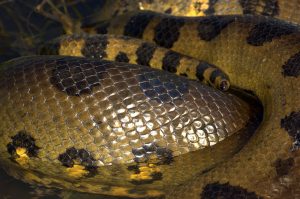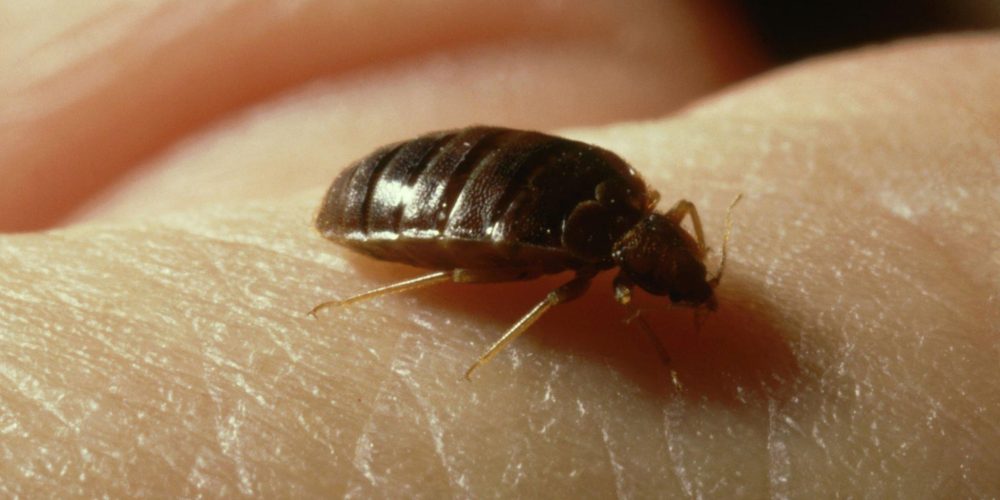Anaconda! Does that name make chills run down your spine? You would certainly tremble if you’d seen the Hollywood movie “Anaconda.” But, the truth is, they aren’t as dangerous or ferocious as the movies often depict them. Anacondas are the largest snakes in the world and belong to the family of boa constrictors. By the term “largest,” we mean that it is the largest/biggest based on mass and bulk. This clarification is necessary because the title of the “world’s longest snake” has remained a debate among sources.
Some claim that the reticulated python is the longest, but it’s still not clear. Based on evolution spanning millions of years, anacondas have deliberately evolved a large, muscular body to make up for the absence of venom. They are very shy snakes, despite the popular misconception.
The green anaconda is the biggest of all the four known species of anaconda snakes. As expected, a snake that is famous for being the largest in the world naturally has attracted several myths, folklores, and photographic hoaxes. Of the latter, there has been an abundance of claims and pictures by several persons claiming to have seen or captured the world’s largest anacondas. Such claims and faked pictures often exaggerate the size beyond proportions.
Size and weight of Anacondas
How large and weighty do these sources of folklores and nightmares get? Well, based on research, confirmed sightings, captures, and discoveries, herpetologists and wildlife experts say that anacondas can grow to be about 30 feet (9 meters) in length and weigh up to 550 pounds. That’s about 225 kilograms! However, these lengths are exceptions, and adults are often just about 17–20 feet (5–6 meters) long. Having a much bigger bulk than pythons, it remains the undisputed champion of reptiles. Female anacondas are often larger than their male counterparts.
The next question you’re probably going to want to ask is “where do anacondas live” so that you can stay clear of their property? The anaconda snake is native to mainly South America, particularly the Amazon and Orinoco Basins, where they reside and preside. They are semiaquatic animals with their kingdom covering both land and water, though they tend to favor rivers more than land. They shuttle between the Amazon River, Rainforests, and Basins.
Anacondas especially love habitats that combine both features of land and water, such as marshes, swamps, murky streams, and rainforests. They are therefore found in South American countries of Brazil, Venezuela, Bolivia, Ecuador, Paraguay, the Island of Trinidad, Guyana, Peru, French Guiana, and Suriname. That stretches through East of the Andes, Amazon, and Orinoco Basins. In all of these countries, they choose areas with a comfortable temperature since all snakes are ectothermic.
Life expectancy and reproduction of an anaconda
Female anacondas reproduce offspring by giving birth to live young. They give birth to an average of 30 babies. Isn’t that jaw-dropping? Did you know that there have been instances of more than 80 babies? When born, these future heirs of the title of “world’s largest snake” are left to fend for themselves. Their millions of years of evolution have engineered the necessary survival instincts into their DNA.
Though that doesn’t mean they are not vulnerable at such a very tender age. The average lifespan of an anaconda snake in the wild and that of an anaconda snake in captivity differ greatly. An anaconda in the wild can grow to be up to 10 years old, while those in captivity, if properly taken care of, can grow to be 30 years!
You might be wondering what they eat to get so big. Well, nature provides their sustenance. It is worthy to note that anacondas hunt only when they are hungry, as we shall be dispelling certain popular myths and rumors about them later on. They are solely carnivores with an appetite consisting for animals. The babies are born into swamps, and marshy environments and are left to fend for themselves.
Their usual meal includes fishes, frogs, and rodents. With their appetite increasing in accordance to their increasing size and hunting prowess, their prey includes a diet of wild pigs, turtles, birds, caimans, wattle jacanas, capybaras, collared peccaries, South American tapirs, and even jaguars. They often lie in wait at river banks for animals coming to drink. Though they are slow and sluggish on land, in the water, however, they are sleek and stealthy.
They can stay submerged in water for up to 10 whole minutes as they can partially breathe in oxygen through their skin which gives them an immense advantage over their unsuspecting prey. They don’t necessarily need to see their prey; they can accurately lock in on their target by sensing the prey’s body temperature. Plus, their nostrils and eyes are conveniently located on the top of their heads which helps in concealing the rest of their body in water while only the top of their head is above the water.
Contrary to popular opinion that anacondas and all other snakes in the family of constrictors suffocate their prey, they do not. Rather, the act of wrapping their muscular, long body around the prey (constricting) cuts off the oxygen supply to the prey’s brain and other body parts, which leads to cardiac arrest and eventual death in minutes! Since they are nonvenomous, they don’t need to bite their prey. When they do bite, however, they do so in order to hold on to their prey while they swallow it whole. Digestion might take weeks, depending on the bulk of their prey.
Are Anacondas endangered?
With regards to predators and possibly being endangered, yes, anacondas have predators. Young anaconda snakes are occasionally hunted by jaguars as they pack the most ferocious bite of all the cat family. Since newborn anacondas are left uncared for by parents, they could fall prey to the powerful jaguars. However, it is very rare for full-grown anacondas to be hunted by jaguars except for a jaguar that is either a daredevil or a blatant fool. There is yet another phenomenally dangerous predator – Humans!
Are you surprised? Then you must have been one of those whom the movies and folklores have convinced that anacondas are ferocious man-eaters. We’ll talk more on that later. Humans often hunt anacondas for leather, meat, claims of medicinal properties and sometimes out of fear. As to whether they are endangered, though, the general consensus is that they are not endangered just yet. That’s thanks to their evolutionary ability to give birth to tens of babies at once. However, their habitat is endangered as mankind keeps encroaching and destroying their natural habitats.
Are Anacondas dangerous?
These encroaching and sometimes destructive activities of human actions lead us to whether anacondas attack, hunt or eat humans? Anacondas can go without food for months after a hefty meal such as that of a wild pig, hunting only when hungry. And when they are hungry, humans are far down their list of favourite delicacies. There have been several folklores depicting anacondas as man-eating demons and shapeshifters.
Even the media has its share of the blame as there have been blockbuster movies presenting these snakes as having an insatiable thirst for human blood. This is far from the truth. It is true that there have been reports of people getting bitten and having an anaconda bite scar, but there has been no evidence that anacondas eat humans. Paul Rosolie was featured in December of 2014 in a video clip showcased on Discovery Channel.
In the clip, Paul wore supposedly protective gear and enticed an anaconda snake to swallow him with the plan of having his friends get the snake to regurgitate him later. But the snake wasn’t interested in eating him. Paul probed further until the snake was provoked to anger and then began constricting him. The end result was that the test failed. While there may not be any evidence supporting that anacondas do eat humans, you should still avoid them because they are wild animals, after all.
In conclusion, anaconda – the world’s largest snake remains the undisputed holder of that title until, if ever, we discover a different species of snake that will challenge that title. Several mysteries, myths, folklores and terrifying stories exist about these Amazon giants because they reside in places where accessibility is limited and exploration difficult.

















